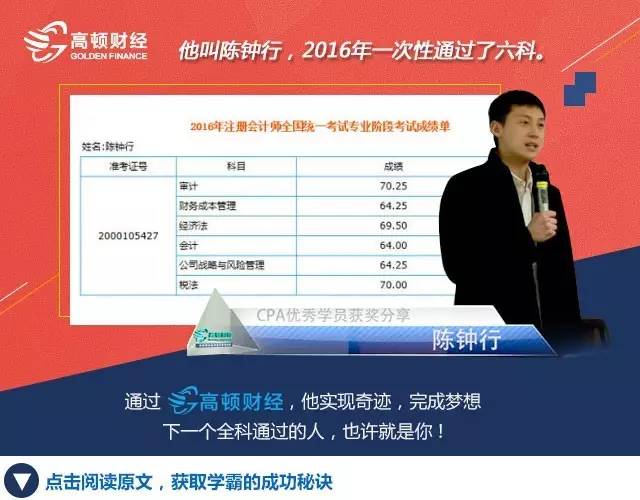
一个四大合伙人在其职业生涯平均能挣1100万美金(含晋升合伙人前的职业生涯),各位有算过自己这辈子能挣多少薪水吗?
What is the Typical Big 4 Partner Salary?
by Michael Stephens Last modified on June 6, 2017

We get it, you want to join the Big 4 because you have dreams of making partner.
As career goals go, it's not a bad one.
But is the Big 4 partner salary worth all those long hours and years of hard work?
In this post we'll discuss what a typical Big 4 partner salary looks like.
In the U.S. it takes 12 and 15 years to go from staff to partner level.
That really isn't so long, especially when you consider professions like physician where it can take 10 years just to get started.
If you can stick it out the rewards are pretty great.
So how did we research and calculate these Partner salaries?
Well, some of our team here at Big 4 Career LAB are current and ex-Big 4 Partners.
So we did the easy thing…we asked them!
The Big 4 are usually pretty secretive about their pay, and so we're confident that this is the most accurate overview of Big 4 Partner salaries anywhere.
But before we dive into the detail, there are some specific things you need to know.
A Big 4 Partner Salary…Isn't a Salary
Partners do not earn a salary.
Yes, you read that right.
So how do they get paid so much for all those hours worked?
Partners effectively own the business. That PwC Partner you know…she actually owns PwC (along with the other thousands of Partners, hence the title “partner”).
Instead of a salary Partners earn units, whose value relates to a share of the profitability of the firm for that year.
Profits are typically shared every quarter, but because nobody wants partners to starve (unlikely…), they do receive a salary-like “advance” every month.
Buy-in Payments are Required
When new partners are promoted, they are expected to “buy-in” to the partnership.
And buy-in payments typically range from $250,000 to $1 million.
That's a lot of cash. What is this buy-in payment for?
The buy-in process covers some important factors which a typical employee isn't concerned above, such as personal liability.
But essentially, the large buy-in payment is designed to make sure new partners do not leave the firm for a very long time.
The thing is, most new partners will not have millions sitting around in their checking account.
And so to make it even more difficult to leave, the partnership helpfully offers an interest free loan to fund this buy-in payment.
The interest free loan is repayable over 10 years and so (in our example below) reduces the Big 4 Partner salary by approximately $100,000 a year.

(Noooo, where's my money going!)
Partner is just the Beginning
Admit it.
You've just passed your Big 4 interview and you thought that being made Partner would be the pinnacle of your Big 4 career, right?
Think again.
Becoming a new partner is like starting your first day all over again. You are at the bottom of the pile and need to work your way up.
There are 7 to 10 distinct partner levels within each of the Big 4, with promotion from each meaning more units.
Promotions happen in the same way as for typical Big 4 employees.
You will need to work hard, bring in clients and run an effective business.
A typical partner might reach level 6 by retirement. The higher levels are reserved for the CEOs, Chairs, board members and other leaders.
It's all about the Equity
You've heard about equity, right? It’s the love of entrepreneurs everywhere.
Partner's units equal equity, and their share of equity depends on a number of factors.
We mentioned their “Partner level” above, but there are numerous other factors that go into determining how rich the Partner is going to get:
Importance of their clients to the firm
Fees earned per year
Helping other employees become Partner
Back office duties (such as talent leadership, risk, etc)
Because of this, a super successful sales partner that does little else may earn the same as a board member because they bring in so much cash.
The other big factor is service line.
Advisory/consulting Partners typically earn the most because they are very much in demand. They could easily go and join Bains or BCG.
But for accounting partners, the Big 4 is the end game. Moving anywhere else would be a downgrade.
And it’s more than just Money
Yes, money is important.
How else could the Partners afford a Ferrari and their own Helicopter (true story…).
But there are other factors that are often overlooked when it comes to making Partner at the Big 4.
Firstly, there's the personal satisfaction of making it to that level. It's fairly rare with only 2 to 3% of hires making it (though not impossible, just look at the number of new U.S. partners that PwC recently promoted).
Beyond that, partner can expect unbelievable healthcare benefits and access to members-only clubs.
Oh and don't forget the pension.
One of the main advantages to being Partner is the pension scheme. Partners can expect to receive around 25% of their best three year's earning average.
That can equal hundreds of thousands of dollars.
So How Much do Big 4 Partners Make?
Ok, we're finally here.
How much cash do Big 4 Partners make each year?
Let's take the example of Jim Simmonds, a new partner in the New York international tax practice.
We can calculate his annual and lifetime earnings like this:
1. Annual earnings for a new Big 4 Partner are approximately 7 times starting salary. Jim's starting salary was $60,000 so that's $420,000
2. This is then reduced by the buy-in payment ($100,000 per year)
3. Jim will go on to lead a large team and bring in average-sized client. He will also be in charge of innovation for his department. He will reach level 6 in the partner structure before he retires
Here’s a graphical representation of Jim's career earnings.

See how it decreases some years where his practice or the firm as a whole didn’t reach it's targets.
So yeah, in today's money a typical partner can expect to earn over $11 million during their career.
Not bad, eh?
But as we said, these amounts can vary widely.
Some partners who stick to their business and don't do much back office work could stagnate around $600,000.
On the other hand, board members and regional leaders will be well into the millions per year, up to $3 million plus for CEOs and Chairs.
In conclusion, Big 4 partner salaries range from $400,000 a year to $3 million plus, with the average being approximately $750,000, taking into account all new and existing partners.
Want us to help you earn $11 million over your career? Check out our Big 4 career services.
以下为用户精彩评论及作者回复:
JULY 14, 2017 John 评论
Hey thank you for the article very interesting !
What about partners in the People Advisory Services ? How do they bring in new business ? Aren't professionals in this business line only involved in recruiting and managing pay, and others internal processes ?
JULY 14, 2017 Michael Stephens 回复
Hey John, thanks for the comment! So People Advisory Services is an EY service which consults to external businesses on their talent and workforce issues. Those partners definitely do win business. I think you mean partners in “internal services” at the Big 4, such as HR, risk mgmt, etc. In that case you're right, those partners don't win external business. There's two reasons for that. Either these partners are very senior and have worked in the client field for a long time and their skills are such that they are just as valuable working internally at a senior level. Or occasionally a very skilled external person (say an HR director from a Fortune 100 company) will be brought into the business at partner level. These “internal” partners will be judged on factors other than revenue earned, such as reducing employee turnover.
JULY 26, 2017 Patrick D 评论
This is not very realistic to show a graph with 25 years at the partner level. Assume the person makes partner at age 37 or 38 after 15 years with the firm. Very few partners will stay until the mandatory retirement age, which at some firms is 60. Many will be forced out or retire quite a bit earlier than 60 as well (53-56) so 15-20 years as partner are a better comparison. Your $420K is high for starting pay too and doesn’t discuss the other costs involved (pay your own payroll taxes, 401k match, full freight medical insurance costs, etc).
JULY 26, 2017 Michael Stephens 回复
Thanks Patrick for your comment! It seems like you have experience of this so good to hear from you.
I tend to agree with what you're saying about the time span, 25 years would be a long time at partner…although 15 as you suggest would be on the low end. The chart is just there as an example of what “could” be earned assuming everything was done by the book (that is, join at 22 from college, 13 years to partner which is fairly typical and then 25 years until 60). As I mentioned in the article there will be huge variation depending on many factors. For starting pay, our research showed $420k to be the median figure, but again will depend on various factors and I appreciate your comment. And finally the costs you mention are typical of any worker (taxes, 401k, medical) so aren't special to partner and therefore not relevant here. We're showing what a partner would earn, not their take home pay.
JULY 26, 2017 Patrick D 评论
The costs I mentioned are costs of any “partner” but not for any employees unless they are self employed. Also, the $420k figure is quite high compared to actual pay for new audit and tax partners and I'm in a large market. I am assuming this includes advisory, which would skew the figures. Is this also only stating pay for the “full equity” partners only, excluding the non-equity or low equity partners who now exist at certain firms?
JULY 28, 2017 Michael Stephens 回复
Hi Patrick! Thanks again for contributing! I see what you're saying now re costs (to clarify, that a partner doesn't receive a 401k match or subsidized medical insurance from their employer, so will have to shell out comparatively more). And yes, these figures are aggregate, so that's why the starting pay may be on the high side based on your understanding. We have mentioned pay disparity between service lines and also directors and non-equity partners in our complimentary Big 4 Salary Guide. But I think it'd be worth mentioning here too though. Thanks for your input!

▎本文转载自Big 4 Career LAB。注册会计师整理发布。
若需引用或转载,请注明以上信息。
